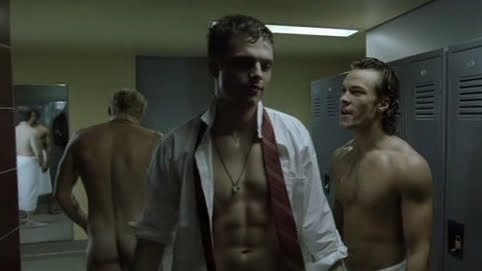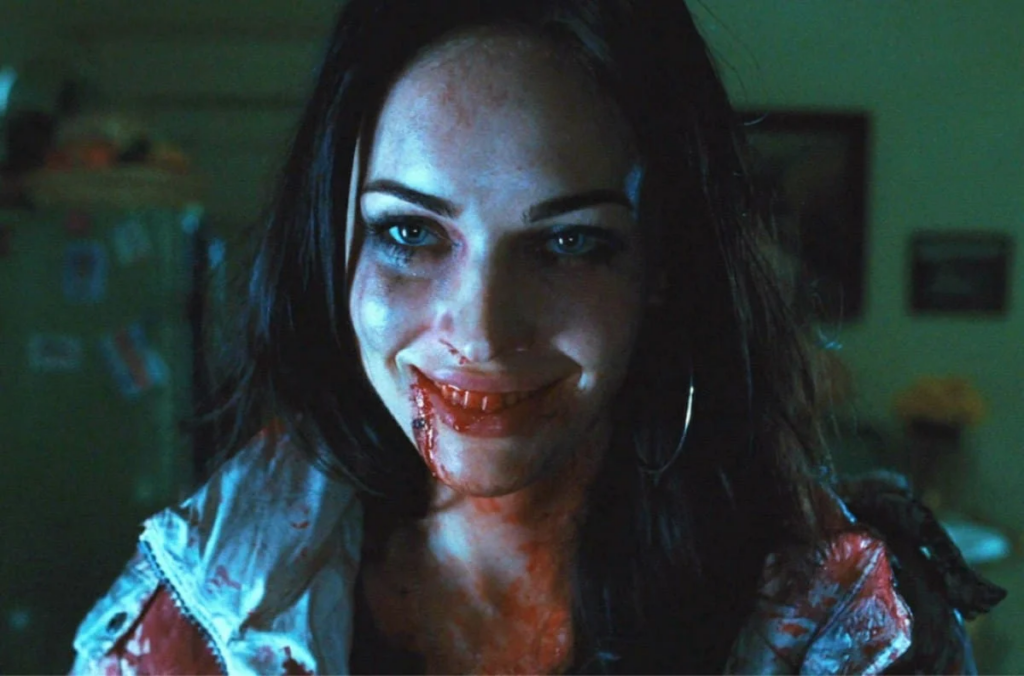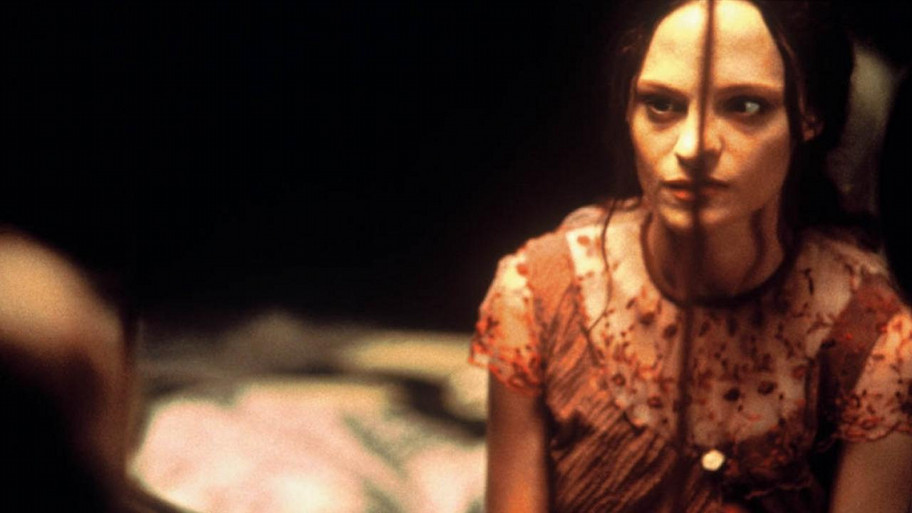
Horror movies have long been a space where societal fears, anxieties, and taboos are explored through larger-than-life villains and supernatural forces. But beneath the jump scares and gore, many of horror’s most iconic figures hide another layer of meaning—one that resonates with the LGBTQ+ community. From the misunderstood creatures cast out by society to characters struggling with dual identities, horror has often mirrored the queer experience, whether intentionally or subconsciously. As we celebrate Northern Nevada Pride this weekend, it’s the perfect time to shine a spotlight on the “monsters” in the closet—those horror icons who, for generations, have been read by fans and scholars alike as coded representations of homosexuality. In this blog, I’ll delve into some of these characters, exploring how horror reflects the struggles, fears, and triumphs of the queer community.

In Bride of Frankenstein (1935), Dr. Frankenstein and Dr. Pretorius embody a fascinating dynamic that lends itself to queer interpretation. Dr. Pretorius, played with flamboyance and eccentricity by Ernest Thesiger, serves as a clear foil to the more repressed and conflicted Victor Frankenstein. Their relationship takes on a particularly suggestive tone when Pretorius pulls Frankenstein away from his wedding bed, preventing him from consummating his marriage with Elizabeth. This moment is a symbolic interruption of heteronormative domesticity, as Pretorius tempts Victor into resuming their experiment—an endeavor that is, in many ways, their own twisted form of “procreation.” In this sense, their “child,” the Bride, is the product of two men’s collaboration, conceived outside of traditional boundaries of gender and reproduction.
Pretorius himself, with his theatrical mannerisms, revels in a camp sensibility that hints at his queer coding. His obsession with creating life parallels the ways in which gay men were often depicted in early cinema—isolated from heteronormative relationships and family structures, seeking fulfillment through unconventional means. The act of creation in Bride of Frankenstein becomes a shared experience between two men, sidelining the role of women and subverting traditional family dynamics. Pretorius’s presence in the film can be read as an assertion of queer identity, disrupting the heteronormative narrative arc and inviting viewers to consider the deeper implications of identity, partnership, and creation outside societal norms.
Bride of Frankenstein is available to stream on Peacock.

Judith Anderson’s portrayal of Mrs. Danvers in Rebecca (1940) has long been interpreted as one of cinema’s most iconic representations of repressed, obsessive lesbian desire. As the housekeeper of Manderley, Mrs. Danvers is intensely devoted to the memory of Rebecca, the first Mrs. de Winter, whose beauty and presence still haunt the estate. Her fixation on Rebecca transcends mere loyalty, taking on a possessive, almost romantic quality. Mrs. Danvers’ hostility toward the second Mrs. de Winter is fueled by a sense of jealousy and betrayal, as if no one could ever replace her beloved Rebecca. Her moments of reverence, especially when she fondles Rebecca’s clothing and reminisces about her scent and charm, carry an unmistakable erotic undertone, suggesting a deep, unspoken affection for her former mistress.
Mrs. Danvers’ cold, domineering demeanor and her control over the household reflect a woman whose life is entirely consumed by her love for another woman, creating a character that exudes queer subtext. Her manipulation of the new Mrs. de Winter, culminating in a climactic attempt to drive her to suicide, can be seen as Danvers’ desperate effort to preserve the memory of Rebecca as untouchable, ensuring that no one can tarnish her idealized image. The film, while never explicitly addressing Mrs. Danvers’ sexuality, leaves enough ambiguity to suggest that her obsession with Rebecca is rooted in more than just loyalty. It’s a coded portrayal of forbidden love, with Mrs. Danvers trapped in a cycle of grief, longing, and rage—feelings that can’t be openly expressed in a society that denies her desires.
You can watch Rebecca on YouTube.

Alfred Hitchcock’s Rope (1948) is often interpreted as a daring exploration of repressed homosexuality, set against the backdrop of a tense murder plot. The film centers around two young men, Brandon and Philip, who murder a classmate to prove their intellectual superiority. Their relationship, marked by an intense closeness and a power dynamic that borders on romantic obsession, is rife with homoerotic undertones. The film never explicitly addresses their sexuality, but their interactions, filled with tension, admiration, and jealousy, suggest a deep bond that transcends friendship. Brandon, the more dominant of the two, often takes on the role of seducer, convincing the anxious and guilt-ridden Philip to go along with his sinister plan. Their relationship, though veiled by the restrictions of 1940s cinema, can be read as a queer subtext, with the murder itself symbolizing the destructive consequences of living in a society that condemns their desires.
What makes Rope especially compelling from a queer perspective is how it plays with themes of guilt and secrecy, both common experiences in the lives of LGBTQ+ individuals at the time. The entire plot revolves around the concealment of a crime, echoing the need for Brandon and Philip to hide their true selves from the world. Their interactions with their former teacher, Rupert Cadell (played by James Stewart), further emphasize this tension. Rupert, who shares a close intellectual and possibly emotional bond with the pair, becomes a moral compass, questioning the philosophy behind the murder and, indirectly, the nature of their relationship. The claustrophobic setting, the lingering unease between Brandon and Philip, and the film’s suggestion that they are bound by something unspeakable all contribute to Rope being a nuanced examination of queer identity under societal repression.
Rope is available to rent or buy on Amazon.

In Psycho (1960), Alfred Hitchcock creates one of his most complex characters in Norman Bates, whose repressed identity and twisted relationship with his mother reveal deep psychological—and potentially queer—subtexts. Norman’s inability to separate from his domineering mother, his divided persona, and the violent outbursts that result from these internal conflicts can be interpreted as a metaphor for repressed desires, particularly those related to gender and sexuality. The film positions Norman as someone whose identity is fragmented, constantly shifting between the ‘mother’ persona he adopts and his troubled self. His cross-dressing as ‘Mother’ during his murderous acts is not just a disguise but a manifestation of his fractured sense of self, which has long been analyzed as an expression of repressed sexual confusion, gender dysphoria, or queerness.
Hitchcock’s exploration of queer themes throughout Psycho, as well as in earlier films like Rebecca and Rope, highlights his fascination with characters whose identities are unstable or subversive of heteronormative expectations. In Rebecca, Mrs. Danvers’ obsessive love for Rebecca and her resentment toward the second Mrs. de Winter create a coded portrayal of lesbian desire. In Rope, the intense and dangerous relationship between Brandon and Philip contains homoerotic undertones that permeate the plot. With Psycho, Hitchcock takes this exploration further, delving into the psychological horror of repression. Norman Bates represents the ultimate embodiment of the consequences of a society that pathologizes and punishes non-normative identities, whether those be tied to gender or sexuality. Across these films, Hitchcock seems to explore the ways in which queerness is both repressed and externalized as something monstrous, often leading to tragedy or violence. In Norman’s case, his repression explodes into a horrifying split between mother and son, man and woman—representing a struggle to reconcile societal expectations with his own buried identity.
Psycho is available to stream on Prime Video.

A Nightmare on Elm Street 2: Freddy’s Revenge (1985) has earned a reputation as “the gayest horror film of all time,” largely due to the subtext surrounding its lead character, Jesse, and his interactions with both his male peers and Freddy Krueger himself. Jesse’s sexual identity is hinted at throughout the film, from his clear discomfort during his attempted sexual encounter with Lisa to his intense and almost magnetic connection with Grady, with whom he ultimately seeks comfort in a moment of crisis. The film positions Jesse as a young man grappling with his desires, which manifest in his nightmares and waking life as Freddy Krueger, a dark force that threatens to possess and control him. The infamous scene in which Jesse flees from Lisa’s advances and runs to Grady’s bedroom instead speaks to the internal conflict many queer individuals face when trying to navigate their desires within a heteronormative world. The film’s coach, who frequents an S&M bar and is later killed in a homoerotic shower scene, further reinforces the film’s explicit portrayal of queer characters and spaces.
What’s often overlooked, though, is the queerness of Freddy Krueger himself in this sequel. Freddy becomes more than just a villain—he is an embodiment of Jesse’s repressed desires, symbolizing the fear of queerness and the idea of being “taken over” by something uncontrollable and unwanted. Freddy’s frequent attempts to “come out” through Jesse, to possess him and use his body for his own violent ends, parallel the struggle many closeted individuals face with self-acceptance. Freddy’s taunting and invasion of Jesse’s mind and body blur the lines between victim and predator, transforming Freddy into a metaphor for internalized homophobia. In the infamous line “You’ve got the body, I’ve got the brains,” Freddy positions himself as an almost parasitic force, forcing Jesse to confront the darker, more frightening parts of his identity. In this way, Freddy is not just a villain terrorizing Jesse—he is the manifestation of Jesse’s fear of his queerness, making Freddy’s Revenge a deeply layered, queer horror film.
A Nightmare on Elm Street 2: Freddy’s Revenge is available to rent or buy on Amazon.

Hellraiser (1987), directed by openly gay filmmaker Clive Barker, introduces Pinhead and the Cenobites, beings from another dimension who blur the lines between pleasure, pain, and taboo. From a queer perspective, these characters can be seen as metaphors for the exploration of non-normative sexualities and desires, especially through their sadomasochistic imagery. Barker has stated in interviews that the distinct look of the Cenobites—dressed in black leather, with Pinhead adorned in pins piercing his head—was inspired by his experiences in underground S&M clubs. This aesthetic, rooted in BDSM subculture, aligns with themes of power, control, and the complex relationship between pleasure and suffering, which can be read as a metaphor for queer experiences, particularly those that challenge mainstream sexual norms.
Pinhead, as the leader of the Cenobites, embodies a figure who transcends traditional binaries of good and evil, reflecting the way queerness often exists outside societal norms. His authoritative presence, paired with his articulate speeches on suffering and ecstasy, resonates with the dualities many queer individuals face in navigating desire and repression. The Cenobites don’t offer punishment in the conventional sense; they provide liberation through the embrace of the unnatural and the forbidden—an allegory for queerness itself. Barker’s Hellraiser becomes a story about the consequences and rewards of fully exploring one’s deepest desires, no matter how taboo, much like the queer journey of rejecting societal expectations and embracing one’s true identity. In this sense, the Cenobites, with their otherworldly and sadomasochistic allure, represent the breaking of boundaries, offering a transgressive form of freedom that mirrors the queer experience of embracing one’s desires in defiance of traditional norms.
Hellraiser is available to stream on Tubi.

Interview with the Vampire, based on Anne Rice’s novel, explores rich queer themes, particularly through the complex and turbulent relationship between Lestat and Louis. The film presents a narrative that defies traditional heteronormative frameworks, positioning Lestat and Louis as deeply intertwined companions whose bond transcends conventional labels. Their relationship can be read as a metaphor for a same-sex partnership, marked by intimacy, conflict, and a shared sense of otherness. The film challenges viewers to reconsider the nature of family and relationships, with Lestat and Louis forming a non-traditional family unit with Claudia, a young girl they turn into a vampire. This family dynamic, which defies societal norms, becomes a poignant reflection of the queer experience—an exploration of chosen families and the complications of love that do not fit neatly into expected societal roles.
The queer subtext of Lestat and Louis’ relationship is further emphasized by the power dynamics, emotional dependency, and the struggle for identity. Lestat, often seen as the dominant partner, represents a hedonistic embrace of the vampire lifestyle, seeking to mold Louis into a reflection of himself, much like a lover trying to control or shape their partner. In contrast, Louis embodies inner turmoil and guilt, resisting Lestat’s influence and struggling with his own moral compass. This push-and-pull dynamic echoes the real-life complexities of many queer relationships, where issues of power, self-acceptance, and defiance of societal expectations are at play. Their bond, marked by moments of tenderness, betrayal, and reconciliation, serves as a powerful allegory for the difficulties of navigating a relationship outside societal norms, highlighting the inherent loneliness and connection found in the queer experience.
Interview with the Vampire is available to rent or buy on Amazon.

The Covenant (2006) offers a subtle yet significant exploration of queer themes, particularly through the lens of male relationships, power dynamics, and the subversion of traditional masculinity. The film centers on a group of four young men, all descendants of powerful warlocks, whose intense bond is marked by an underlying tension that goes beyond simple friendship. These characters share a secret world that sets them apart from the norms of their peers, drawing parallels to the experience of being closeted or part of an invisible minority. The homoerotic undertones are palpable, especially in scenes that emphasize physicality, intimacy, and emotional closeness between the male leads, suggesting that their connection is as much about their shared supernatural heritage as it is about their deep, unspoken bonds with one another.
The film also challenges conventional representations of masculinity through its portrayal of male vulnerability and desire. Characters like Caleb and Chase engage in a rivalry that can be read as a reflection of suppressed attraction, envy, and power struggles often seen in queer-coded narratives. Their conflicts are laced with moments that blur the line between aggression and desire, capturing the complex ways in which repressed feelings can manifest in intense, often destructive interactions. This subtext is enhanced by the film’s deliberate aesthetic choices—lingering camera shots of the male body, the absence of significant female counterparts, and the emphasis on the characters’ close-knit brotherhood—which collectively evoke a sense of queerness that permeates the narrative. Ultimately, “The Covenant” stands as a supernatural thriller that quietly queers the high school drama genre, offering a tale of male camaraderie that is just as much about hidden desires and identity as it is about magic and power.
The Covenant is available to rent or buy on Amazon.

Jennifer from Jennifer’s Body (2009) is a complex character whose queerness is a crucial element of her identity and the film’s subversive narrative. Jennifer, portrayed by Megan Fox, embodies a predatory sexuality that challenges heteronormative expectations, especially in her relationship with her best friend, Needy. The film subverts typical horror tropes by positioning Jennifer not just as a femme fatale, but as a queer figure whose power and sexuality are intrinsically linked. Her connection with Needy goes beyond friendship; it is marked by moments of intense emotional and physical intimacy that suggest a deep, unspoken attraction. This attraction culminates in a scene where the two share a passionate kiss, a moment that is both charged with desire and indicative of their complex, almost symbiotic relationship. Jennifer’s queerness, therefore, is not just about her sexual orientation but also about how she wields her sexual power, using it to navigate her trauma and reclaim control in a male-dominated world.
Jennifer’s queerness also serves as a commentary on the monstrous feminine and the fear of female sexuality. After being sacrificed in a botched satanic ritual, Jennifer transforms into a succubus-like figure who feeds on boys, turning the typical male predator-female victim dynamic on its head. Her queerness becomes a form of rebellion against the expectations placed upon her by society; she is not just a victim of male violence but also an avenger who subverts traditional gender roles. The film uses Jennifer’s queerness to explore themes of desire, jealousy, and the blurred lines between friendship and romantic attraction, particularly through her interactions with Needy. Jennifer’s ability to both terrify and seduce encapsulates the film’s feminist undertones, positioning her as a queer anti-heroine whose monstrousness is a reflection of her refusal to conform. Her queerness, therefore, is both a source of empowerment and a critique of how female sexuality is often demonized, making Jennifer one of the most fascinating and subversive queer characters in contemporary horror cinema.
Jennifer’s Body is available to stream on Tubi.

In the indie horror film May (2002), the titular character, played by Angela Bettis, embodies queerness through her deep longing for connection and her refusal to conform to conventional norms of sexuality and identity. May is an awkward, lonely young woman who finds solace in her constructed world, but her desire for intimacy is a central driving force in the film. Her attraction is fluid, extending to both men and women, as seen in her intense fixation on Adam, a man she idolizes for his “perfect” hands, and Polly, a woman she is equally drawn to for her confidence and charm. May’s queerness is portrayed not just as a sexual orientation but as an intrinsic part of her fractured identity, one that seeks out love and validation in unconventional and ultimately disturbing ways. The film uses May’s queerness to explore the complexities of desire and rejection, positioning her as a figure who cannot find solace within traditional relationships.
May’s queerness also reflects her struggle with societal expectations and her sense of otherness. Her inability to connect in normative ways leads her to desperate, often unsettling attempts to create her idealized version of a perfect companion—one that reflects the fragmented nature of her desires. The film subverts the typical horror narrative by presenting May not just as a villain but as a tragic figure whose queerness underscores her profound loneliness and inability to fit into any social or sexual mold. Her relationships with Adam and Polly highlight her fluid attraction, but also her inherent disconnect from both, as she is never fully accepted by either. This rejection from traditional romantic and platonic connections drives her to craft her own “perfect friend,” piecing together parts of the people she desires, in a macabre reflection of her inner turmoil. Ultimately, May’s queerness is a haunting portrayal of the lengths to which one might go to find acceptance, and a critique of how society marginalizes those who don’t fit into its rigid definitions of love and belonging.
May is available to stream on Tubi.

The Babadook (2014) has gained recognition within queer communities for its allegorical portrayal of queer themes, particularly through the character of Amelia and the titular monster, the Babadook. While the film itself does not explicitly identify any characters as queer, its subtext and the ways in which it explores grief, repression, and identity have resonated deeply with LGBTQ+ audiences. Amelia’s struggle with the Babadook—a manifestation of her unresolved trauma and repressed emotions—mirrors the experience of living with a hidden or suppressed identity, which can be interpreted as a queer-coded struggle. The Babadook, in this context, becomes a symbol of the “other,” an intrusive force that disrupts normalcy and must be acknowledged and integrated rather than defeated or hidden. This metaphor speaks to the broader queer experience of coming to terms with one’s identity in a society that often demands conformity and suppression of difference.
Amelia’s journey in the film can be viewed as a parallel to the process of coming out and accepting one’s true self. Initially, she denies the existence of the Babadook, much like individuals who might suppress aspects of their identity due to societal pressure or personal fear. As the Babadook’s presence grows more insistent, Amelia is forced to confront it head-on, ultimately learning that the only way to coexist with this part of herself is to acknowledge and accept it. This acceptance of the Babadook, which she ultimately keeps in her basement and tends to daily, is symbolic of embracing one’s queerness—not as something to be eradicated, but as a fundamental part of who she is. The film’s exploration of grief, hidden desires, and the monstrous aspects of the self resonates with the queer experience of navigating a world that often seeks to suppress or demonize non-normative identities. By the end of the film, Amelia’s acceptance of the Babadook reflects a nuanced, if dark, portrayal of self-acceptance, making it a powerful queer allegory that has found a lasting place in LGBTQ+ horror canon.
The Babadook is available to stream on Netflix.

The recent IT films (2017, 2019) incorporate queer themes through the character of Richie Tozier and the predatory nature of Pennywise, reflecting fears of identity and societal rejection. Richie’s arc, particularly in the 2019 film, subtly reveals his closeted homosexuality and unspoken love for his friend Eddie, highlighting the pain of growing up queer in a hostile environment. Richie’s internal struggle is manifested through Pennywise’s attacks, which exploit his deepest fears, including his hidden sexuality. This portrayal adds emotional depth to the narrative, framing the battle against IT as not just a fight against an external monster but also an internal struggle against shame, fear, and self-acceptance.
Pennywise himself can be seen as a queer-coded villain, embodying society’s fear of the “other” and exploiting insecurities related to identity. His shape-shifting ability reflects the fluidity often associated with queer identities, twisted into something monstrous by the narrative. This is evident in the opening of the 2019 film, where Pennywise’s presence during a violent hate crime against a gay couple symbolizes the pervasive nature of homophobia. The Losers’ battle against Pennywise mirrors the broader struggle to confront and embrace one’s identity in the face of societal judgment. Ultimately, the films use horror to explore the fears surrounding queerness and difference, making IT a powerful allegory about the dangers of living as an outsider in a conformist world.
IT is available to rent or buy on Amazon.

Billy Loomis and Stu Macher from Scream (1996) are central to the film’s subversion of horror tropes, and their relationship has long been read through a queer lens, adding an intriguing layer to their dynamic as killers. The film plays with traditional gender and sexual norms, particularly in how Billy and Stu’s partnership blurs the lines between intense friendship, homoerotic subtext, and a toxic, co-dependent bond. Their interactions are filled with suggestive undertones—lingering touches, intimate glances, and an overall closeness that feels charged with suppressed desire. This subtext is particularly evident in the final act, where their plan unravels in a physical and emotional frenzy, with Billy’s dominance and Stu’s submissiveness reflecting a distorted but undeniably intimate relationship. Their queerness, though never explicitly stated, plays into their shared rebellion against societal expectations, positioning their violence as both a performative act and an expression of their hidden selves.
The queerness of Billy and Stu’s relationship also critiques the performative masculinity often seen in slasher films. They reject conventional male roles, instead embracing a flamboyant and theatrical approach to their crimes that suggests a deeper emotional connection. Their partnership is less about the typical male camaraderie seen in horror films and more about a dangerous symbiosis, driven by an unspoken attraction that heightens their thrill for chaos. The film’s playful subversion of gender roles, where the killers often taunt their victims with theatricality and camp, can be read as a commentary on the repressive nature of heteronormativity and the consequences of bottled-up queer desire. In the end, Billy and Stu’s relationship is emblematic of the film’s overall challenge to horror norms—queering the slasher genre by making the killers’ bond as complex and intriguing as their violent acts, and hinting at a queerness that both connects and ultimately destroys them.
Scream is available to stream on MAX.
As we wrap up this exploration of queerness in horror cinema, it’s clear that these films do more than just scare—they reflect the fears, desires, and triumphs of the queer community. From the coded relationships of Bride of Frankenstein to the subversive dynamics in Scream and the inner turmoil of The Babadook, horror provides a unique space to confront and embrace the monstrous parts of ourselves. This weekend, as we celebrate Northern Nevada Pride, let’s honor these stories by embracing our own inner monsters—those parts of us that defy norms, challenge expectations, and make us who we are.
And what better way to channel that energy than by creating your own horror story? Registration is now open for the Carson Creepy Short Horror Film Competition! This is your chance to dream up your own monsters and tell stories that reflect your unique voice and vision. Whether you’re inspired by the queer subtext of classic films or looking to invent something entirely new, this competition invites you to unleash your creativity. Let’s celebrate pride, queerness, and the power of storytelling—both on screen and off!
